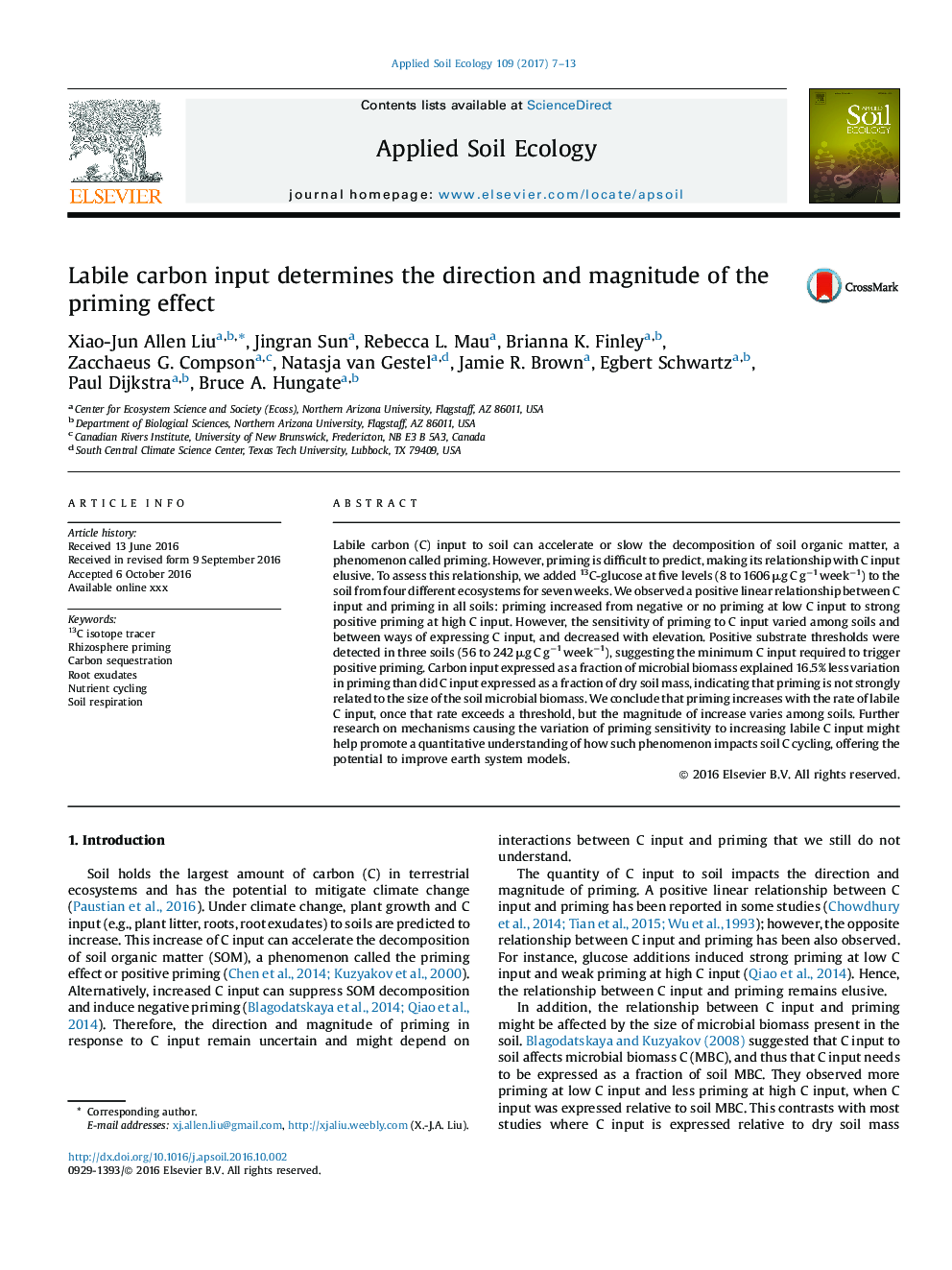| Article ID | Journal | Published Year | Pages | File Type |
|---|---|---|---|---|
| 4381764 | Applied Soil Ecology | 2017 | 7 Pages |
•Five levels of glucose applied weekly to four different soils for seven weeks.•A positive linear relationship between glucose amounts and priming.•Three soils showed substrate thresholds – minimum C input required to stimulate positive priming.•Priming was not strongly related to soil microbial biomass.•Labile C input increased priming and accelerated soil C cycling.
Labile carbon (C) input to soil can accelerate or slow the decomposition of soil organic matter, a phenomenon called priming. However, priming is difficult to predict, making its relationship with C input elusive. To assess this relationship, we added 13C-glucose at five levels (8 to 1606 μg C g−1 week−1) to the soil from four different ecosystems for seven weeks. We observed a positive linear relationship between C input and priming in all soils: priming increased from negative or no priming at low C input to strong positive priming at high C input. However, the sensitivity of priming to C input varied among soils and between ways of expressing C input, and decreased with elevation. Positive substrate thresholds were detected in three soils (56 to 242 μg C g−1 week−1), suggesting the minimum C input required to trigger positive priming. Carbon input expressed as a fraction of microbial biomass explained 16.5% less variation in priming than did C input expressed as a fraction of dry soil mass, indicating that priming is not strongly related to the size of the soil microbial biomass. We conclude that priming increases with the rate of labile C input, once that rate exceeds a threshold, but the magnitude of increase varies among soils. Further research on mechanisms causing the variation of priming sensitivity to increasing labile C input might help promote a quantitative understanding of how such phenomenon impacts soil C cycling, offering the potential to improve earth system models.
